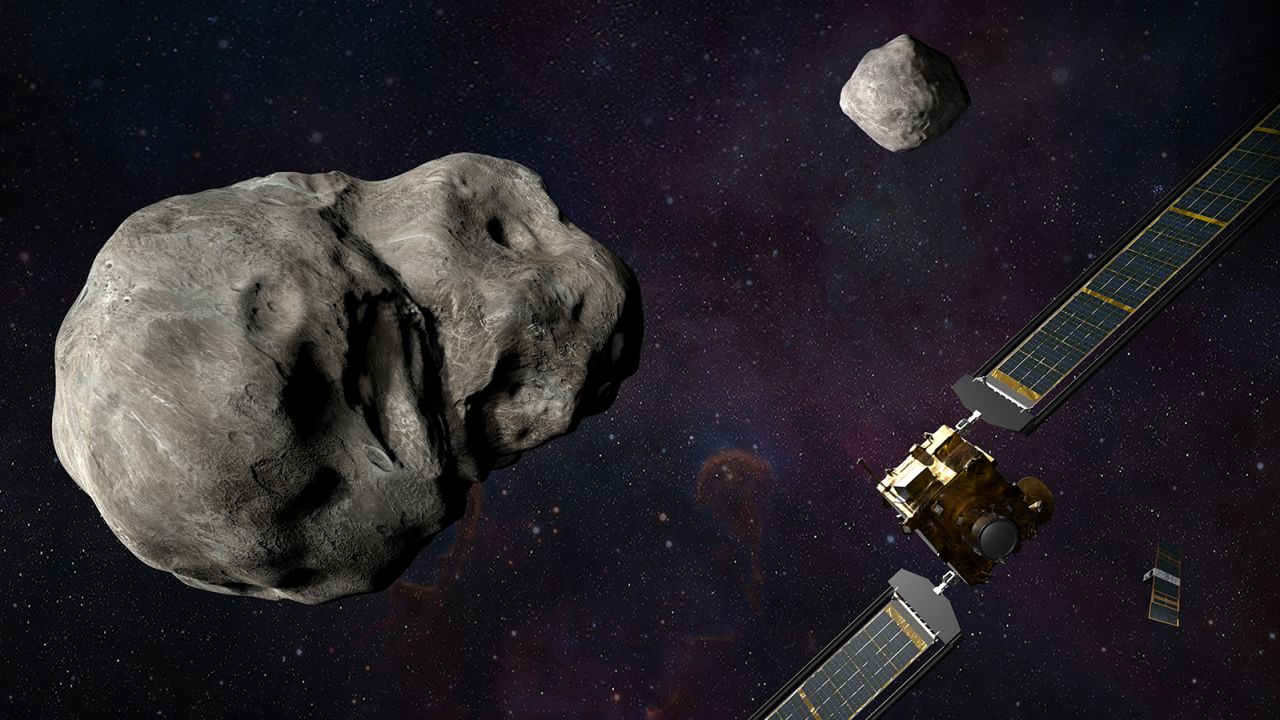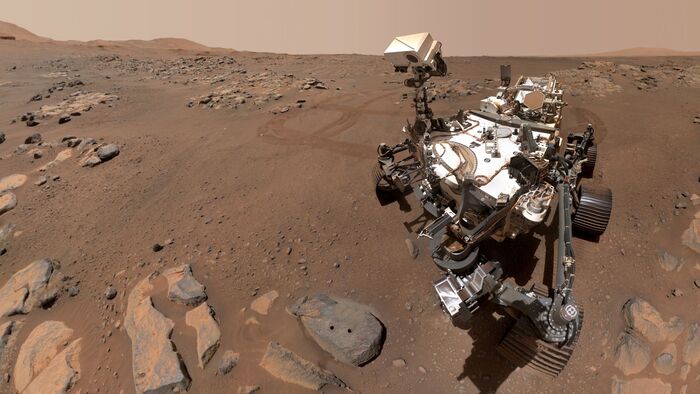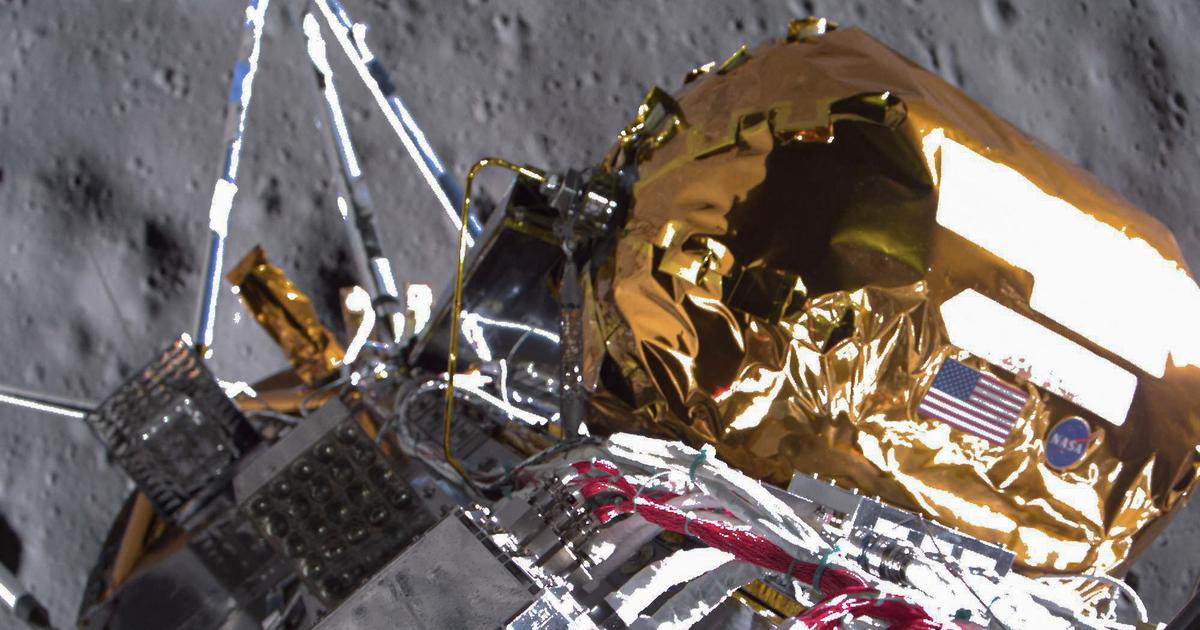They carry out an asteroid impact threat drill on Earth 0:53
(CNN) --
The NASA spacecraft that will deliberately crash into an asteroid is getting closer to its target.
The DART, or Double Asteroid Redirection Test, mission will have an encounter with the space rock on September 26, 10 months after its launch.
The spacecraft will crash into an asteroid's moon to see how it affects the asteroid's motion in space.
Beginning at 5:30 pm Miami time that day, a live feed of the spacecraft's images will be available on NASA's website.
The impact is expected to occur around 7:14 pm Miami time.
The mission targets Dimorphos, a small moon orbiting the near-Earth asteroid Didymos.
The asteroid system poses no threat to Earth, NASA officials have said, making it a perfect target for testing a kinetic impact, which might be necessary if an asteroid is on its way to collide with Earth. .
The event will be the agency's first large-scale demonstration of asteroid deflection technology that can protect the planet.
advertising
"For the first time, we will measurably change the orbit of a celestial body in the universe," said Robert Braun, head of the Space Exploration Sector at the Johns Hopkins University Applied Physics Laboratory.
Near-Earth objects are asteroids and comets with orbits that place them within 30 million miles of Earth.
Detecting the threat of near-Earth objects, or NEOs, that could cause serious damage is a primary goal of NASA and other space organizations around the world.
Light from asteroid Didymos and its mole Dimorphos in a composite of 243 images taken by DRACO on July 27.
What will the impact of the collision with the asteroid be like?
Astronomers discovered Didymos more than two decades ago.
Means "twin" in Greek, a nod to how the asteroid forms a binary system with the smaller asteroid or moon.
Didymos is almost 0.8 kilometers in diameter.
Meanwhile, Dimorphos is 160 meters in diameter, and its name means "two forms".
The spacecraft recently caught its first look at Didymos using an instrument called the Didymos Optical Navigation and Reconnaissance Camera, or DRACO.
It was about 20 million miles from the binary asteroid system when it took the images in July.
On impact day, the images taken by DRACO will not only reveal our first glimpse of Dimorphos, but the spacecraft will use them to autonomously navigate its encounter with the small moon.
During the event, these images will be beamed back to Earth at a rate of one per second, providing a "pretty impressive" look at the moon, said Nancy Chabot, a planetary scientist and DART coordination lead at the Applied Physics Laboratory.
At the moment of impact, Didymos and Dimorphos will be relatively close to Earth, about 11 million kilometers away.
The spacecraft will accelerate to about 15,000 miles per hour when it collides with Dimorphos.
Its goal is to collide with Dimorphos to change the asteroid's motion in space, according to NASA.
This collision will be recorded by LICIACube (Light Italian CubeSat for Imaging of Asteroids), a companion cube satellite provided by the Italian Space Agency.
The briefcase-sized CubeSat traveled with DART into space.
It has recently been deployed from the spacecraft and is traveling behind it to record what is happening.
Three minutes after impact, the CubeSat will fly alongside Dimorphos to capture images and video.
The video will not be available immediately, but will be transmitted to Earth in the weeks and months following the collision.
An illustration shows NASA's DART spacecraft and the Italian Space Agency's LICIACube before the collision with Dimorphos.
(Credit: Steve Gribben/Johns Hopkins APL/NASA)
protect the planet
Dimorphos was chosen for this mission because its size is familiar to that of asteroids that could pose a threat to Earth.
The spacecraft is about 100 times smaller than Dimorphos, so it won't destroy the asteroid.
The fast impact will only change the speed of Dimorphos in its orbit around Didymos by 1%, which doesn't sound like much, but it will change the orbital period of the moon.
"Sometimes we describe it as a golf cart crashing into a big pyramid or something," Chabot said.
"But in the case of Dimorphos, it's really about deflecting an asteroid, not disrupting it. This is not going to blow up the asteroid, it's not going to blow it apart."
The push will slightly displace Dimorphos and make it more gravitationally bound to Didymos, so the collision won't change the binary system's trajectory around Earth or increase its chances of becoming a threat to our planet, Chabot said.
Dimorphos completes one orbit around Didymos every 11 hours and 55 minutes.
After the impact, it is possible that it will change to 11 hours and 45 minutes, but follow-up observations will determine the magnitude of the change.
Astronomers will use ground-based telescopes to look at the binary asteroid system and see how much Dimorphos's orbital period has changed, which will determine whether DART was successful.
Space telescopes, such as Hubble, Webb and NASA's Lucy mission, will also observe the event.
Four years from now, the European Space Agency's Hera mission will arrive to study Dimorphos, measuring the physical properties of the moon, and observe the DART impact and the moon's orbit.
Currently, no asteroids are on a direct impact course with Earth, but there are more than 27,000 near-Earth asteroids of all shapes and sizes.
The valuable data collected by DART and Hera will contribute to planetary defense strategies, especially understanding what kind of force can displace the orbit of a near-Earth asteroid that could collide with our planet.








